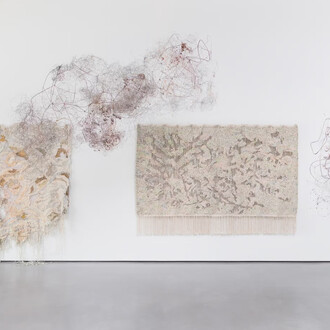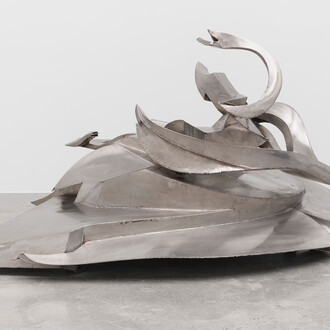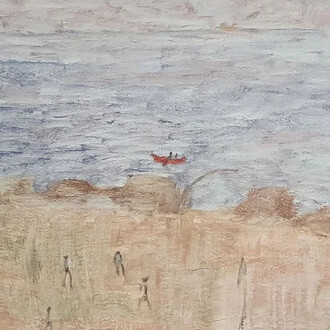From May 22 to October 31, the Gary Nader Art Centre is proud to present a magnificent exhibition of the renowned Cuban master Wifredo Lam, one of the most influential figures in modern art. This exhibition, spanning nearly four decades of his prolific career, will offer visitors a unique opportunity to explore Lam’s artistic evolution through 18 masterpieces meticulously selected by Gary Nader, widely recognized as an authority on Wifredo Lam's work.
“For over 40 years, our work and commitment have been to promote Lam’s work worldwide”, says Gary Nader.
In 1993, Nader presented Wifredo Lam: a tribute, followed by Wifredo Lam homage 100 birthday in 2002. Notably, Wifredo Lam—one man show was reintroduced in 2016 in collaboration with Phillips. In 2021, the renowned gallerist curated Wifredo Lam: the imagination at work in association with Pace Gallery, showcasing paintings, works on paper, and rare bronze sculptures, providing a profound exploration of Lam’s career and legacy.
1940s: the emergence of Lam’s unique style
Lam’s early works, produced between 1941 and 1945, represent a period of great experimentation and synthesis of influences. After returning to Cuba in 1941, following several years in Europe, Lam began to fuse elements of Cubism and Surrealism with Afro-Caribbean symbolism, a style that would define his career. During this period, works like Hermès trismégiste (1945), The flying bird (1945), and Butinantes (1945) reveal his growing interest in Afro-Cuban mythology and Santería, blending human and animal figures into hybrid forms that explore cultural and spiritual identity. One of the most captivating aspects of Lam’s paintings is his skillful use of symbolism and mythology, drawing heavily on African, Caribbean, and Latin American folklore. His symbolic language serves as a powerful tool in works like Jungle gods (1948). This piece is emblematic of Lam’s most fruitful period, combining Cubist elements with Afro-Caribbean spirituality. The piece symbolizes the complex relationship between man and nature, a recurring theme in his work, and is considered one of the most powerful representations of his artistic vision. Also, Figure [Femme Cheval] (1949), which conveys deep emotional and cultural narratives.
1950s: maturity and thematic exploration
The pieces from the 1950s, such as Ídoli (1955) and Here on Earth (1955), reflect a period of stylistic maturity and consolidation. In Two people and a bird (1957) and La veille (1959), Lam continues to explore the duality of human existence and spiritual connections with nature, maintaining his distinctive use of dreamlike and symbolic forms. This period also marks his growing international recognition, with exhibitions in Europe and America.
1960s and 1970s: innovation and International expansion
In the 1960s, Lam continued to innovate and expand his repertoire, as seen in "Nous te voyons" (1964) and "Horizon Chauds" (1968). From 1969, his work shows an evolution towards more abstract compositions without losing its rich symbolism. The final pieces, from 1970 to 1972, reflect a mix of introspection and continuous exploration, solidifying his legacy as a master of cultural and artistic fusion.
Wilfredo Lam’s artistic journey began in Cuba, taking a transformative turn when he moved to Spain in 1923. His early works reflect the influence of academic traditions and Spanish masters like Goya and Velázquez. However, his immersion in the Surrealist movement in Paris marked a significant turning point in his career. During his time in Paris, Lam established connections with influential figures such as Pablo Picasso, André Breton, and Aimé Césaire, whose influence deeply shaped his art. In particular, Lam’s use of fragmented forms and abstract figures was inspired by Picasso, who became a close mentor. This period marked Lam’s transition to a more avant-garde style, characterized by a fusion of Cubist and Surrealist techniques. One of the most captivating aspects of Lam’s paintings is his skillful use of symbolism and mythology, drawing heavily on African, Caribbean, and Latin American folklore. Lam’s contributions to modern art lie in his unique visual language and his ability to unite diverse cultural traditions, challenging the dominance of Western artistic paradigms. Through his art, Lam created a space where multiple identities could coexist and dialogue, reflecting the hybrid nature of the Caribbean experience.












